|
LichensPat A. Wolseley, Peter James, Diccon Alexander, Frank S. Dobson
FSC Wildlife Packs Volume 20
Field Studies Council (FSC)
2015
"These colourful and widespread organisms can be seen all year round. Featuring six of the FSC's popular fold-out charts: Lichens on twigs; Churchyard lichens; Urban lichens 1 (on trees and wood); Urban lichens 2 (on stone and soil); Rocky shore lichens; and Lichens of heaths and moors. Each pack includes a card-sized magnifier, so you can get in even closer to the details."
|
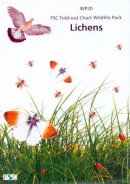 |
|
The Lichens of JerseySimon Davey with Amanda Davey
Société Jersiaise
2015
"Jersey has a wide range of lichen habitats and the island makes an ideal subject for a book on this fascinating group of organisms. As the birthplace of one of the great nineteenth-century field lichenologists, the Jerseyman Charles du Bois Larbalestier, the importance of Jersey as an area for the study of lichens is underlined."
|
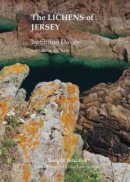 |
|
Recent Advances in LichenologyVolume 1: Modern Methods and Approaches in Biomonitoring and BioprospectionVolume 2: Modern Methods and Approaches in Lichen Systematics and Culture TechniquesEditor: Dalip Kumar Upreti, Pradeep K. Divakar, Vertika Shukla, Rajesh Bajpai
Springer Verlag
2015
"The two volume set provides comprehensive coverage on recent advances in various segments of Lichenology. Chapters are contributed by experts working in different fields of lichenology across the world. Special focus on biodiversity and conservation, impact of climate change on lichens and ecosystem services of lichen diversity. Recent Advances in Lichenology discusses in detail molecular, mycobiont culture, biomonitoring and bioprospection of lichens, providing insights into advances in different fields of lichenology by applying modern techniques and approaches and examining how their application has enhanced or changed classical approaches. It offers a valuable resource, especially for beginners, students and researchers from different academic backgrounds interested in the study of lichens."
|
Buy from amazon.co.uk
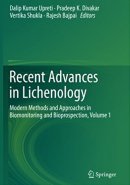
Volume 1
Buy from amazon.co.uk
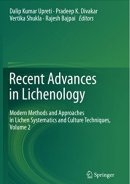
Volume 2 |
|
A Field Key to Common Churchyard LichensFrank S. Dobson
Lichen Field Guide Series
2nd edition
2014
"The result of three years of extensive testing by various lichen groups with all degrees of experience. It is fully illustrated throughout and enables nearly 255 species of lichen to be identified in the field. It covers lichens on stone, soil and wooden structures such as gates, fences and benches. In the second edition the species names have been updated and some minor corrections made. It includes a few new species in the main key but the most important change is in the supplementary key to species on wood. This is based on the much extended key in Lichens on Trees. The book is now 50 pages in length and includes 255 species against the 190 in the previous edition."
|
Buy from amazon.co.uk 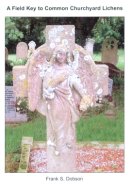
|
|
A Field Key to Lichens on TreesFrank S. Dobson
Lichen Field Guide Series
2013
"A Field Key to Lichens on Trees contains 128 colour photographs and illustrated keys. These keys use only characters that are visible in the field, by eye, or under a ×10 hand lens. This combination enables the user to identify over 500 species of lichens which are likely to be found on trees. There is also a supplementary key to 'Lichens on sawn wood' (such as posts, fences or benches). All the species descriptions include a distribution map for the British Isles."
|
Buy from amazon.co.uk 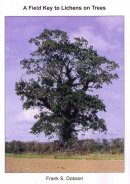
|
|
Lichens of Welsh Atlantic Woodlands Guide 1: The Lobarion Lichens Of Ash, Hazel, Willow, Rowan And Old Oak
Plantlife
2013
An 8 page guide - available online from Plantlife.
"This guide is for anyone interested in identifying some of the more conspicuous lichens of Atlantic woodlands, and aims to provide the tools to identify good and potentially important lichen habitat. Different species of lichen often grow together, forming distinct communities. The Lobarion community grows on trees with mildly acidic or alkaline bark – for example ash, sycamore, willow, rowan and old oak – and is characterised by large leafy lichens, especially the four Lobaria species.
|
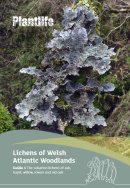 |
|
Lichens of Welsh Atlantic Woodlands Guide 2: The Parmelion Lichens Of Birch, Alder And Oak
Plantlife
2013
An 8 page guide - available online from Plantlife.
"This guide is for anyone interested in identifying some of the more conspicuous lichens of Atlantic woodlands, and aims to provide the tools to identify good and potentially important lichen habitat. Different species of lichen often grow together, forming distinct communities. The Parmelion community grows on trees with very acidic bark, such as alder, birch and oak.
|
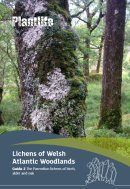 |
|
Lichens of Ireland: An Illustrated Introduction to over 250 SpeciesPaul Whelan
Collins Press
2011
"This is the first introductory book written specifically on Ireland's lichens. Lichen identification is a challenging activity requiring an accurate understanding of lichen anatomy and biology and the associated terminology. Once mastered, a world of Lilliputian biodiversity opens up, using a simple hand lens and Lichens of Ireland. Part I describes with accurate line drawings the essential features of lichen anatomy. This is followed with guidelines on how to equip oneself for a comfortable and rewarding outing, maintaining a field notebook, collecting specimens and dissecting them for identification. Finally Ireland's habitats are classified and described with the new lichenologist in mind. Part II describes in pictures and brief accurate text over 200 lichens found specifically in Ireland's landscape. Each description includes a distribution map, appropriate spot test results, spore size and notes on the habitat/substrate that the lichen is most likely to occupy."
|
Buy from amazon.co.uk 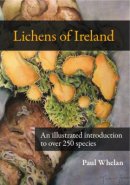
|
|
Lichens: An Illustrated Guide to the British and Irish SpeciesFrank S. Dobson
Richmond Publishing
6th edition
2011
"This book provides an invaluable guide to identifying the British and Irish species both for the amateur naturalist just starting to study lichens, and the more advanced lichenologist. In addition, because of its references to air pollution tolerance and distribution, it offers the environmentalist and ecologist a concise work of reference, compact enough to be used in the field. The sixth edition has been revised to conform with the nomenclature of "The Lichens of Great Britain and Ireland"; Smith C.W. et al. (2009), and more recent changes. It includes a number of species that do not appear in that flora. Over 160 additional species have been added so that this edition now includes more than 1,000 species. It provides a description of most of the species likely to be found in Great Britain and Ireland, those excluded being very rare or very local."
|
Buy from amazon.co.uk 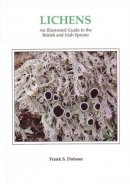
|
|
A Field Key to Coastal and Seashore LichensFrank S. Dobson
Lichen Field Guide Series
2010
"This book contains illustrated keys to enable the identification of over 500 species of lichens likely to be found by the coast or on the seashore plus supplementary keys for those found on limestone, concrete and mortar, sawn wood and soil, mosses and plant debris."
|
Buy from amazon.co.uk 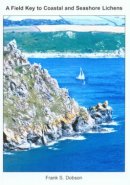
|
|
The Lichens of Great Britain and IrelandEditor: C.W. Smith, A. Aptroot, B.J. Coppins, A. Fletcher, O.L. Gilbert, P..W James, P.A. Wolseley
British Lichen Society
2009
"The Lichen Flora of Great Britain and Ireland published in 1992 was an outstanding achievement for British Lichenology. It was a pioneering work and the first of its type in Europe. This much enlarged revision reflects the considerable accumulation of new information that has occurred since the publication of the first edition and is symptomatic of the enormous advances in lichen taxonomy over the last two decades. There are keys to 327 genera and 1873 species, which is an increase of 386 species since it was first published. The publication provides detailed information on morphology, chemistry and distribution for each species written in language that is readily accessible, avoiding obscure terminology. Both the glossary and introductory sections have been expanded and the latter includes helpful advice on the identification and examination of lichens."
|
Buy from amazon.co.uk 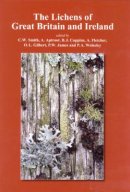
|
|
Lichens of Scottish Pinewoods Guide 1: Leafy & Shrubby Lichens On Pine, Birch, Alder And DeadwoodAndy Acton
Plantlife
2009
An 8 page guide - available online from Plantlife.
"This Plantlife field guide is for anyone interested in identifying some of the more conspicuous lichens found in Scottish native pinewoods. It looks at leafy and shrubby lichens that grow on trees with very acidic bark and on dead wood.
|
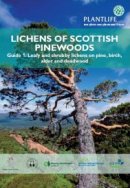 |
|
Lichens of Scottish Pinewoods Guide 2: Crustose And Scaly Lichens On Pine, Birch, And Alder, And Lichens On Trees With Less Acidic BarkAndy Acton
Plantlife
2009
An 8 page guide - available online from Plantlife.
"This Plantlife field guide is for anyone interested in identifying some of the more conspicuous lichens found in Scottish native pinewoods. It looks at scaly and crustose lichens that grow on trees with acidic bark and on dead wood, and at leafy and crustose lichens that grow on trees and shrubs with less acidic bark such as rowan.
|
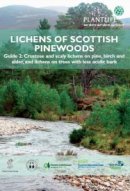 |
|
Guide to Rocky Shore LichensFrank S. Dobson
Occasional Publication Volume 132
Field Studies Council (FSC)
2009
"This fold-out chart covers 62 common species of lichen found on rocky sea shores from the low tide mark up to the limit of sea spray."
|
Buy from amazon.co.uk 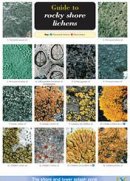
|
|
The Montane Heathland Lichen GuideAndrea Britton
Macaulay Institute
2008
"The Montane Heathland Lichen Guide' is a new field guide aimed at hill walkers, naturalists, field ecologists or anyone interested in learning more about the lichens to be found in mountain environments. The book covers everything you need to know to start looking at lichens in easy, non-technical language and covers all of the species that you are most likely to see in montane heath habitats. Twenty seven of the most common or conspicuous species are fully illustrated with high quality photographs and another twenty four species are covered in the text with notes on how to identify them in the field and how to separate similar-looking species. The 50-page A5 size book is designed with outdoor use in mind and is printed in full colour throughout on tough waterproof paper."
|
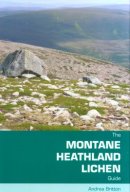 |
|
Lichen BiologyEditor: Thomas H. Nash III
Cambridge University Press
2nd edition
2008
"Lichens are symbiotic organisms in which fungi and algae and/or cyanobacteria form an intimate biological union. This diverse group is found in almost all terrestrial habitats from the tropics to polar regions. In this second edition, four completely new chapters cover recent developments in the study of these fascinating organisms, including lichen genetics and sexual reproduction, stress physiology and symbiosis, and the carbon economy and environmental role of lichens. The whole text has been fully updated, with chapters covering anatomical, morphological and developmental aspects; the contribution of the unique secondary metabolites produced by lichens to medicine and the pharmaceutical industry; patterns of lichen photosynthesis and respiration in relation to different environmental conditions; the role of lichens in nitrogen fixation and mineral cycling; and the use of lichens as indicators of air pollution."
|
Buy from amazon.co.uk 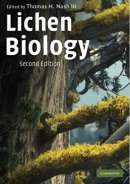
|
|
Lichens of Atlantic Woodlands, Guide 1: Lichens On Ash, Hazel, Willow, Rowan And Old OakAndy Acton & Anna Griffith
Plantlife
2008
An 8 page guide - available online from Plantlife.
"This field guide is for anyone interested in identifying some of the more conspicuous lichens of Atlantic woodlands. It looks at the Lobarion group of lichens that grow on trees with mildly acidic bark (e.g. ash, hazel, willow, rowan and old oak), especially those in more sheltered mixed deciduous woodlands of lower slopes and valleys.
|
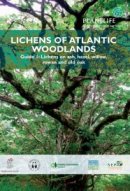 |
|
Lichens of Atlantic Woodlands, Guide 2: Lichens On Birch, Alder & OakAndy Acton & Anna Griffith
Plantlife
2008
An 8 page guide - available online from Plantlife.
"This field guide is for anyone interested in identifying some of the more conspicuous lichens of Atlantic woodlands. It looks at the Parmelion group of lichens that grow on trees with very acidic bark (e.g. alder, birch, oak), especially those growing on poorer soils (e.g. in oakwoods and birchwoods).
|
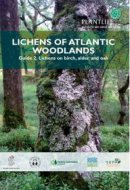 |
|
Guide to Lichens of Heaths and MoorsFrank S. Dobson
Occasional Publication Volume 127
Field Studies Council (FSC)
2008
An 8 page fold-out, laminated guide that covers over 62 species.
|
Buy from amazon.co.uk 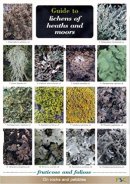
|
|
LichensWilliam Purvis
Life Series
Natural History Museum
2007
"Lichenologist William Purvis explores their unusual biology, amazing diversity and ecological importance. He explains how understanding lichen biodiversity leads to technological developments in medicine, metal prospecting and pollution control. This unique book includes up-to-date information on economic uses and outlines practical project ideas for collecting and studying lichens. Packed with stunning photographs, Lichens reveals the varied and intriguing world of these fascinating organisms that are key indicators of the Earth s environmental health."
|
Buy from amazon.co.uk 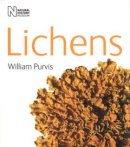
|
|
Lundy LichensAnn Allen
Lundy Field Society
2007
"Lundy Lichens introduces the visitor to the wealth of beautiful lichens on this small island. They provide colour, pattern and texture on coastal rocks and cliffs, heathland, walls, ruins, gravestones, quarries and trees. Lichens flourish in Lundy's clean air and undisturbed environment. Over fifty colour photographs accompany the descriptions of selected lichens grouped in community habitats. A map is provided to guide the visitor to habitats indicated in the text so as to aid in discovering and identifying these lichens. An illustrated glossary is included giving definitions of basic lichenological terms. Background information explains what a lichen is. Lichens, as pioneers, are vital in the colonisation of bare surfaces and also indicate environmental change."
|
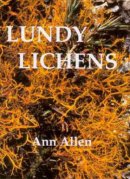 |
|
Guide to Common Urban Lichens 1 (on Trees and Wood)Frank S. Dobson
Occasional Publication Volume 98
Field Studies Council (FSC)
2006
"This is a good time to look at urban lichens, as levels of sulphur dioxide, air pollution and acid rain have been falling rapidly. Many leafy lichens are growing in sites in central London where they may not have been present for 200 years. The first urban lichens fold-out chart concentrates on the lichens found growing on trees and wood. The chart is illustrated with 49 colour photographs and includes an easy-to-use visual lichen identification key."
|
Buy from amazon.co.uk 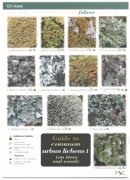
|
|
Guide to Common Urban Lichens 2 (on Stone and Soil)Frank S. Dobson
Occasional Publication Volume 100
Field Studies Council (FSC)
2006
"The second urban lichens fold-out chart concentrates on the lichens found growing on stone and soil. The chart is illustrated with 49 colour photographs and includes an easy-to-use visual lichen identification key."
|
Buy from amazon.co.uk 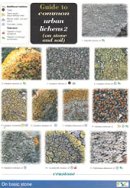
|
|
Shetland LichensKery Dalby and Claire Dalby
The Shetland Amenity Trust
2005
"The first half of the book looks at lichens, what they are, their reproduction, lifestyle, habitats etc. and explains how to identify them. It is written in as user-friendly way as is possible for what is a complex subject. The second half of the book is a species list (with comments which habitats they are found in and abundance) for Shetland. Some 450 species are known to occur here."
|
Buy from amazon.co.uk 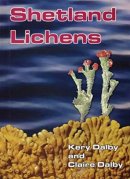
|
|
LichensOliver Gilbert
Naturally Scottish
Scottish Natural Heritage
2004
From the foreword: "Whilst Scotland's outstanding scenery is internationally renowned, the fact that its lichen communities are also of international importance is scarcely recognised. In commissioning this book from one of Britain's leading lichenologists, Scottish Natural Heritage is seeking to put that right. Oliver Gilbert outlines their place in folklore and their role in the one-time world-famous Harris Tweed economy, but it is when he comes to describe some of the special places where lichens thrive that one senses just why these strange organisms make his spine tingle."
|
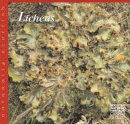 |
|
The Lichen HuntersOliver Gilbert
Book Guild
2004
"The Lichen Hunters is an enthusiastic account of the early years of a burgeoning ecological movement - The British Lichen Society. Formed in 1958 the society created a complete listing of all British lichens. Lichens are like a multitude of small watchmen recording the progress of pollution across the countryside. They are indicators of air-quality, traffic pollution, fertilisers and acid rain. They are also, as far as Oliver Gilbert and his fellow lichenologists are concerned, things of incredible beauty and mystery. His enthusiasm is infectious. Lichenologists bear comparison with the original Victorian plant hunters in their willingness to travel widely, and endure extreme weather in their pursuit of a rare specimen."
|
Buy from amazon.co.uk 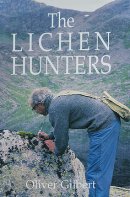
|
|
Guide to Common Churchyard LichensFrank S. Dobson
Occasional Publication Volume 88
Field Studies Council (FSC)
2004
An 8 page fold-out, laminated guide that covers over 50 species.
|
Buy from amazon.co.uk 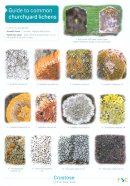
|
|
Key to Lichens on TwigsFrank S. Dobson
Occasional Publication Volume 74
Field Studies Council (FSC)
2003
An 8 page fold-out, laminated guide. "This key is designed to enable you to identify lichens found on twigs and use them to assess local atmospheric conditions. This key indicates which lichens are acid-tolerant and nitrogen- tolerant (2 of the major pollutants that affect lichens) and also indicates lichens that are associated with unpolluted sites."
|
Buy from amazon.co.uk 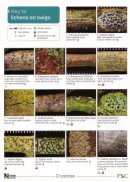
|
|
A Field Key to Common Churchyard LichensFrank S. Dobson
Lichen Field Guide Series
2003
"The result of three years of extensive testing by various lichen groups with all degrees of experience. It is fully illustrated throughout and enables nearly 190 species of lichen to be identified in the field. It covers lichens on stone, soil and wooden structures such as gates, fences and benches."
|
Buy from amazon.co.uk 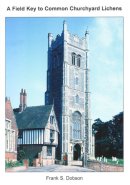
|
|
Aide Memoire: UsneaPeter W. James
British Lichen Society
2003
"An A5 booklet with drawings and many useful tips for identifying the British species of this difficult genus."
|
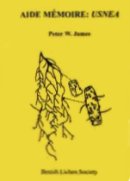 |
|
The Lichen Flora of Cheshire & WirralBrian W. Fox and Jonathan Guest
Nepa Books
2003
|
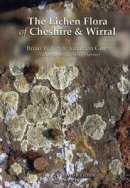 |
|
Checklist of Lichens of Great Britain and IrelandBrian J. Coppins
British Lichen Society
2nd edition
2002
|
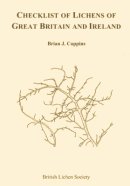 |
|
The Lichen Flora of DevonBarbara Benfield
Glyn Benfield
2001
|
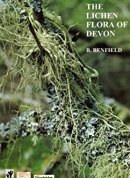 |
|
Lichen Atlas of the British Isles: Fascicle 6: CaloplacaEditor: M.R.D. Seaward
British Lichen Society
2001
|
 |
|
Lichen Atlas of the British Isles: Fascicle 5: Aquatic Lichens and Cladonia (Part 2)Editor: M.R.D. Seaward
British Lichen Society
2000
|
 |
|
LichensOliver Gilbert
New Naturalist 86
Collins
2000
"This book discusses all aspects of British lichens, revealing the secrets of their success. The book begins by looking at how lichens have been used throughout history in medicines, dyes, food and perfumes. It then goes on to describe what lichens are, and how they grow and reproduce. A detailed survey is given of the range of habitats in which lichens can be found: on trees, rocks, heaths and moors, chalk and limestone, mountains, rivers, lakes, the coast, walls and buildings, most famously on churches and in churchyards. Gilbert also discusses the susceptibility of lichens to air pollution, and how they can be used to detect environmental pollution."
|
Buy from amazon.co.uk 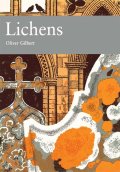
|
|
Lichens: An Illustrated Guide to the British and Irish SpeciesFrank S. Dobson
Richmond Publishing
5th edition
2000
|
Buy from amazon.co.uk 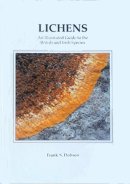
|
|
Understanding LichensGeorge Baron
Richmond Publishing
1999
"Fully comprehensive guide covering the most basic description of what a lichen is through to a complete description of the thallus, including growth forms, reproduction and dispersal, lichen physiology, and habitat and communities. Also covers amateur fieldwork, how to choose a microscope, the uses of lichens and a comprehensive guide to botanical classification of lichens from Kingdom down to form."
|
Buy from amazon.co.uk 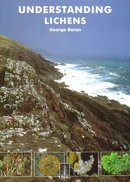
|
|
Lichen Atlas of the British Isles: Fascicle 4: Cavernularia, Degelia, Lepraria, Leproloma, Moelleropsis, Pannaria, ParmeliellaEditor: M.R.D. Seaward
British Lichen Society
1999
|
 |
|
Lichen Atlas of the British Isles: Fascicle 3: The Foliose Physciaceae (Anaptychia, Heterodermia, Hyperphyscia, Phaeophyscia, Physcia, Physconia, Tornabea): Arctomia, Lobaria, Massalongia, Pseudocyphellaria, Psoroma, Solarina, Sticta, and TeloschistesEditor: M.R.D. Seaward
British Lichen Society
1998
|
 |
|
Lichen Atlas of the British Isles: Fascicle 2: Cladonia Part 1 (59 species)Editor: M.R.D. Seaward
British Lichen Society
1996
|
 |
|
Ferns, Mosses and Lichens Of Britain: Northern & Central EuropeHans Martin Jahns
Collins Photo Guide
1996
"This photoguide to ferns, mosses and lichens covers over 750 species, concentrating particularly on those most likely to be encountered and identifiable without the use of a microscope. Chapters describe the structure, reproductive methods and ecology of each of the plant groups."
|
Buy from amazon.co.uk 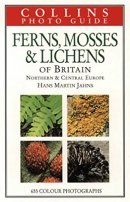
|
|
Lichen On Trees: A Guide To Some Of The Commonest SpeciesAlan Orange
British Plant Life: Number 3
National Museums and Galleries of Wales
1994
|
Buy from amazon.co.uk 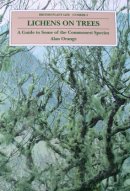
|
|
Cladonia: a field guideN.G. Hodgetts
Joint Nature Conservation Committee
1992
A 40 page guide that covers 82 species and varieties.
|
Buy from amazon.co.uk 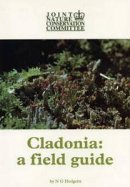
|
|
LichensJack R. Laundon
Shire Natural History 10
1986
|
Buy from amazon.co.uk 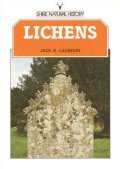
|
|
Grasses, Ferns, Mosses & Lichens Of Great Britain & IrelandRoger Phillips
Pan Books
1981
|
Buy from amazon.co.uk 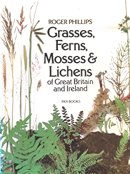
|
|
Lichenology in the British Isles 1568-1975David Hawksworth & Mark Seaward
Richmond Publishing
1977
|
Buy from amazon.co.uk 
|